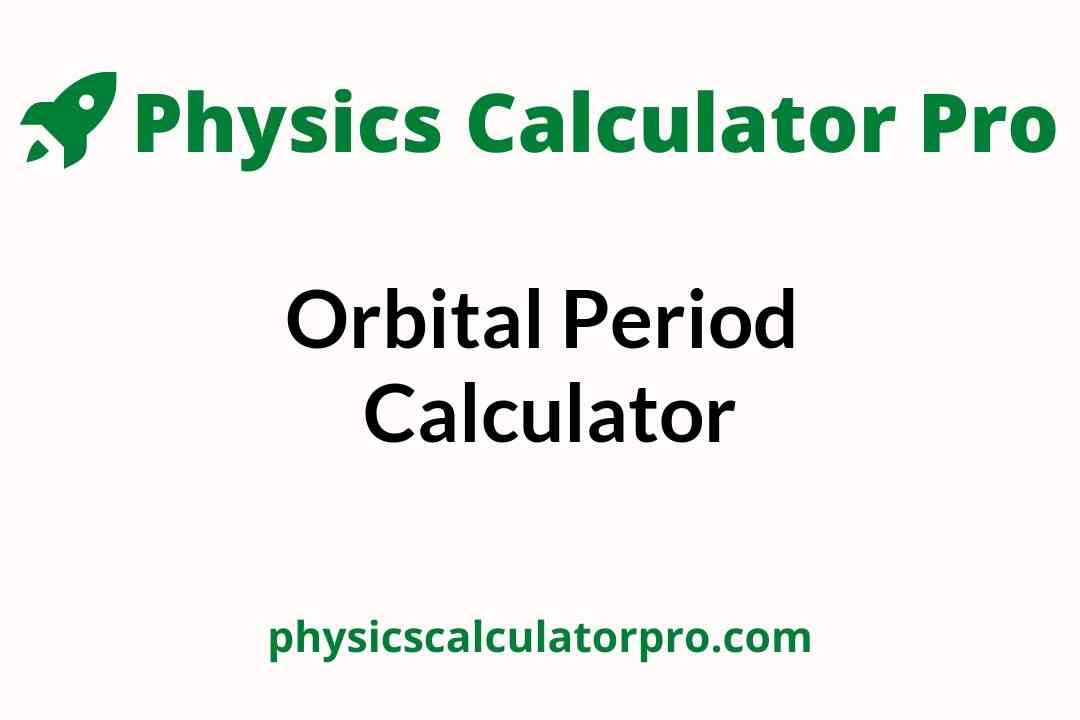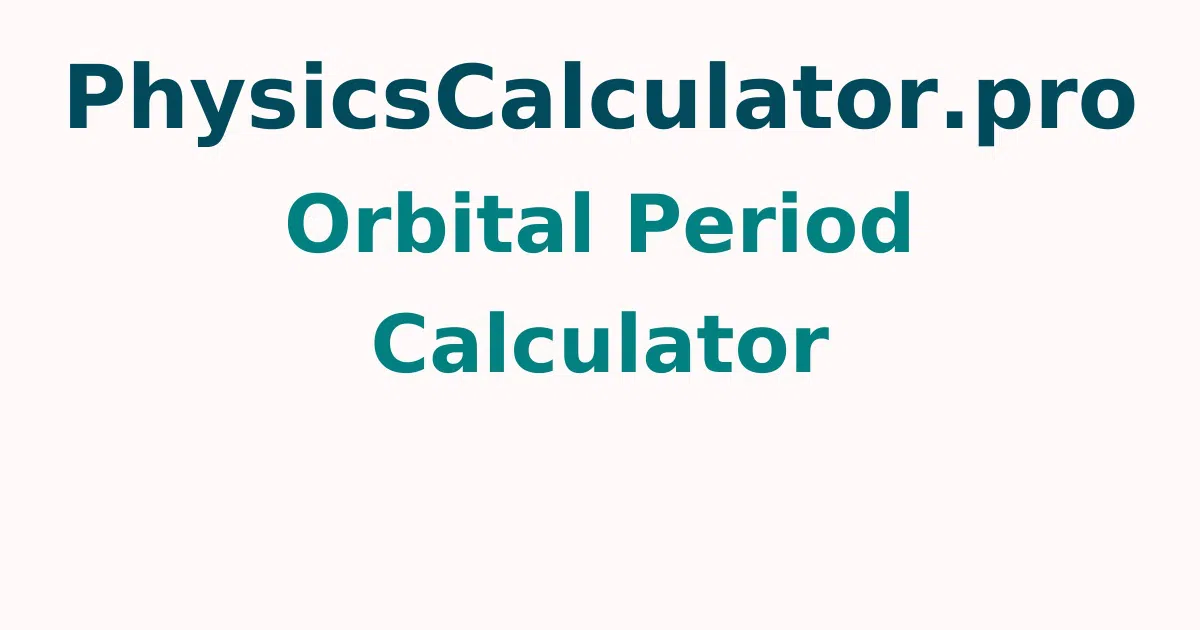Orbital Period Calculator
The orbital period of a satellite and star binary system can be calculated using the free Orbital Period Calculator. It simply takes the central body density, as well as the semi-major axis, first body mass, and second body mass information, and calculates the orbital period in less time.
What is the Satellite Orbital Period?
The path of a body revolving around a separate object is known as its orbit. The Earth orbits the sun in the same way.
An astronomical object's orbital period is the amount of time it takes for it to complete one orbit around another object. It applies to the planets, the sun, the moon, the stars, and many other celestial bodies in general. The third law of Kepler, often known as Kepler's laws of planetary motion, describes how a planet orbits another.
Satellite Orbital Period Formula
The formula to calculate a satellite's orbital period around the central body is T = √[3π / (G * ρ)]
- Where, T - orbital period
- G - gravitational constant
- ρ - density of the central body
Two stars that are near to each other and have similar masses circle around each other without a material centre body in a binary star system. Its orbits are elliptical.
The binary star system orbital period equation is Tbinary = 2π * √[a³/(G * (M₁ + M₂))]
- Where, M1 - first body mass
- M2 - second body mass
- a - semi-major axis.
For more concepts check out physicscalculatorpro.com to get quick answers by using this free tool.
How to Calculate Orbital Period?
The procedure for determining the orbital period of a satellite, planet, or binary star system is described below. To get the result, use these strategies and guidelines.
Satellite Orbital Period
- Step 1: Get the density of the central body.
- Step 2: Multiply the density of the centre body by the gravitational constant.
- Step 3: Divide 3π from the product and multiply by the square root of the result.
- Step 4: As a result, the satellite's orbital period is centred on the centre sphere.
Orbital Period of a Binary Star System
- Step 1: Check the mass of the semi-major axis, first body, and second body.
- Step 2: Add the masses. And multiply the sum of the masses with the gravitational constant.
- Step 3: Divide the product from the cube of the semi-major axis.
- Step 4: Calculate the result's square root.
- Step 5: To get the binary system orbital period, multiply it by 2π.
Orbital Period Examples
Question 1: If the earth's density is 6.25 g/cm3, What is the period of the orbit?
Solution:
Given:
Density of the earth ρ = 6.25 g/cm³ = 6250 kg/m³
The formula of orbital period is T = √[3π / (G * ρ)]
T = √[3 x 3.14 / (6.67408 × 10^-11 x 6250)]
= √[22.58 x 10^6]
= 4753 seconds
= 1.32 hours
Hence, the orbital period of earth is 1.32 hours.
FAQs on Satellite Orbital Period
1. What is the orbital period?
The orbital period (also known as the revolution period) is the amount of time it takes for an astronomical object to complete one orbit around another object.
2. How can you find out the earth's velocity?
To get miles per hour or kilometres per hour, divide 584 million miles (940 million km) by 365.25 days and divide by 24 hours.
3. What factors can affect the orbital period of satellites?
The core body density of a satellite has an impact on its orbital period. The orbital period value reduces as the central body density increases.
4. What are the different types of orbits?
Low earth orbit, medium earth orbit, transfer orbits, geostationary transfer orbit, and sun-synchronous orbit are the various types of orbits.

